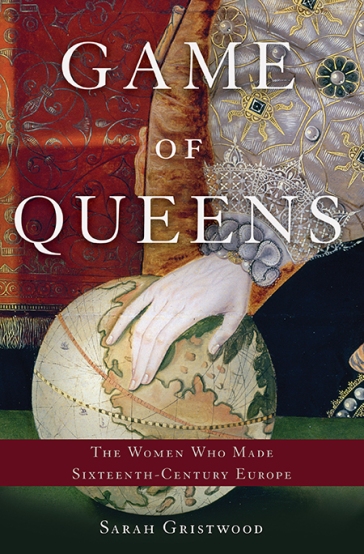the sisterhood of queens
The book opens with the concept of chess. In chess, the aim of the game is to checkmate the opponent's King while safeguarding your own King. This makes the King both the most important and the most vulnerable piece in the game. On the other hand, the Queen is also the most powerful piece, being able to move the way a Rook and a Bishop does. She is the ultimate weapon in protecting the King.
This concept reminds me of this saying: Behind every powerful man is a great woman. It is a concept that resonated to me while I was reading A Game of Queens. In it, author Sarah Gristwood took readers back to the sixteenth century, when men ruled the courts but peace was achieved by discussions among powerful and influential women.
I'd exclude Queen Isabella I of Castile to what Gristwood refers to as the "sisterhood of queens" despite being a global influence (together with her husband, King Ferdinand of Aragon) because she was known more as a ruling monarch... one who had to espouse strength and decision-making capacities typically associated with Kings. Also out of the sisterhood are queens regnant Mary Stuart (aka Mary Queen of Scots) and Elizabeth I. While reading the book, I had the impression that these women dared to take upon themselves the thrones of their respective kingdoms and were most probably surrounded by their male advisers in court; thereby, these queens were effectively isolated from the sorority of 16th century queens. The wives of Henry VIII were also not included into this sorority. This was tragic for the likes of Anne Boleyn, who could have used her connections with some of the most powerful women in Europe (like Margaret of Austria and Claude of France) to prevent herself from being executed.
Instead, I noticed that Gristwood's example of queens involved in the game of protecting king and country were mostly the queen consorts. I think that these queens took preservation of their children, the next in line to the various European thrones, as the very reason why they needed to make sure that their husbands or brothers were protected... or that they became regents, representing the ruling king in his absence (e.g., while he was waging war against other kings). It was, therefore, in their best interest to negotiate peace treaties.
For example, Margaret of Austria (representing Holy Roman Emperor Charles V) met with Louise of Savoy (representing France) in Cambrai to talk peace because the Kings were attacking each other's territories, with King Francis and the Pope becoming hostages of Charles V. And this was set in the backdrop of the expanding Ottoman Empire, threatening to take over weakened Christian territory. The same goes between Catherine de Medici (France) and Jeanne d'Albret (Navarre). Both were married to kings and were on the opposing sides of the conflict between Catholics and Protestants. But despite their differences in religious beliefs, they did their best to keep the peace.
I couldn't help but think that the sisterhood of queens was limited to those in mainland Europe. The English and Scottish queens, in my impression, had so little participation in these peace negotiations despite Scotland being allied with France ("the auld alliance") and probably because the Tudor court effectively isolating itself by separating its church from the rest of the Roman Catholic church (just because Henry VIII wanted to marry Anne Boleyn).
The history of each kingdom and each country is complex. But to understand the past, one has to look at how each group of people was related to and affected by the others. Only in that way can we start piecing together what we are today and prevent the mistakes made by our forefathers. Ika nga nila, Ganito kami noon, paano kayo ngayon?
Checkmate.


Comments
Post a Comment
Thank you for dropping by!
Before moving on, please share your thoughts or comments about the post. :)
Thanks again!